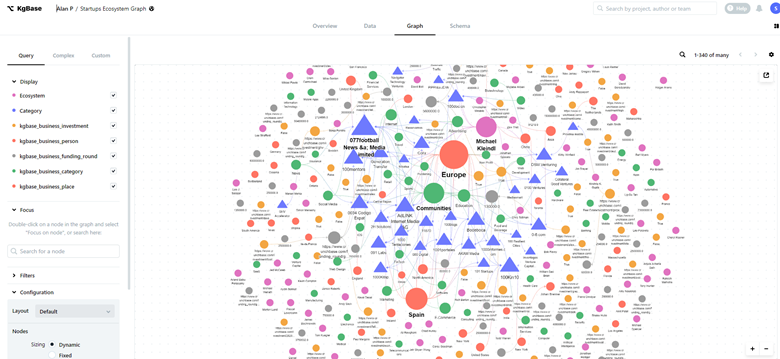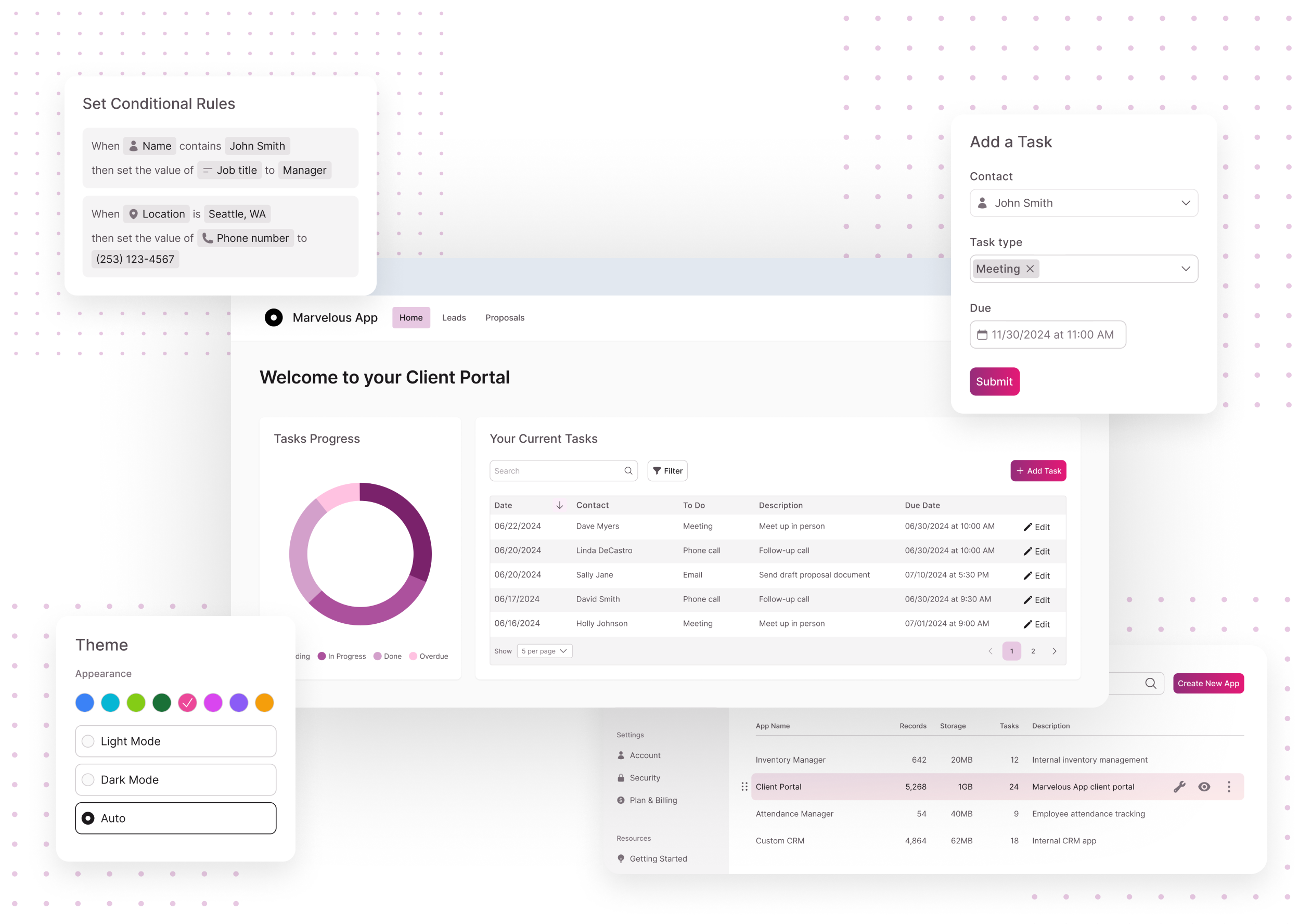Why No-Code is the Future of Open Platform Data Source Development for Companies
Why No-Code is the Future of Open Platform Data Source Development for Companies
Blog Article
Discovering the Benefits of Scalable Databases That Require No Coding Abilities for Reliable Information Management Solutions
The development of scalable databases that get rid of the necessity for coding skills offers a transformative chance for companies seeking effective data monitoring options. As we think about the ramifications of such innovations, it ends up being important to take a look at how they can reshape the landscape of data monitoring and drive lasting growth in an affordable setting.
Boosted Ease Of Access for Users
Boosted availability for customers is an essential element of scalable data sources, making sure that information monitoring systems are intuitive and straightforward. In an era where data-driven choices are vital, access permits a bigger series of individuals, consisting of those without considerable technological expertise, to engage with data source systems efficiently. This democratization of information access facilitates improved cooperation across divisions, encouraging staff members to extract insights and make informed choices.
Straightforward user interfaces, such as drag-and-drop features and aesthetic data depiction, simplify complex information communications. These improvements reduce the understanding curve connected with typical data source management, making it possible for individuals to focus on leveraging data rather than coming to grips with technical intricacies. Scalable data sources often include personalized control panels and real-time analytics, supplying customers with immediate insights customized to their details demands.

Cost-Effectiveness and Source Financial Savings
Efficient data management not just rests on access but additionally on cost-effectiveness and resource savings. Scalable data sources made for users without coding skills significantly reduce monetary burdens normally connected with standard database management systems. By removing the need for specialized programs experience, companies can allot their resources extra successfully, concentrating funds on core service activities as opposed to extensive training or working with proficient personnel.
Additionally, these data sources frequently use cloud-based options, which further decrease prices connected to hardware and maintenance. Organizations can scale their data source services according to their demands, staying clear of the expenditures sustained from over-provisioning sources. This versatility suggests services can adapt to altering needs without sustaining unnecessary costs, resulting in significant long-term savings.
Additionally, user-friendly interfaces improve data entry and management processes, reducing the time invested on administrative tasks. This effectiveness converts right into labor price savings, allowing teams to concentrate on tactical initiatives as opposed to routine maintenance. Generally, taking on scalable databases that need no coding skills promotes a much more economical method to data management, allowing organizations to optimize their resources while keeping high levels of functional effectiveness.
Improved Partnership Throughout Teams

Additionally, scalable data sources promote smooth interaction among employee. With straightforward user interfaces that call for no coding skills, workers can quickly create, modify, and share reports or control panels tailored to their details demands. This democratization of data empowers non-technical users to contribute insights, enhancing the collaborative setting.
Additionally, these data sources sustain simultaneous access, permitting several individuals to work with the very same dataset concurrently. This attribute improves efficiency, as teams can take part in joint data analysis without the risk of version control issues. The capability to leave notes or comments straight within the database even more promotes discussion and makes clear data analyses.
Streamlined Information Management Processes
In today's data-driven setting, companies acknowledge the need of structured information administration refines to take full advantage of performance and precision. By leveraging scalable databases that need no coding skills, companies can streamline their data handling and lower the complexities commonly connected with typical data source systems. This ease of access encourages non-technical individuals to involve straight with data, helping with quicker decision-making and reducing dependence on specialized IT workers.
Structured data monitoring processes boost workflow by automating regular jobs such as information entrance, validation, and reporting. Automated information integration guarantees that information from various resources is aggregated seamlessly, removing silos and cultivating a merged view of important service metrics (no-code). Additionally, easy to use user interfaces allow employees to manipulate information conveniently, allowing them to create understandings that drive critical campaigns without the demand for substantial training.
This performance not only increases operational processes but also lessens the capacity for human mistake, ensuring that information continues to be exact and trusted. Eventually, structured information monitoring procedures with scalable data sources result in enhanced productivity, enabling organizations to focus on core tasks while making sure that their information administration practices are efficient and effective.
Scalability for Growing Companies

For broadening ventures, the capacity to scale their explanation up or down is critical. A scalable database can manage an influx of data produced from new consumers, products, or services, making sure that business procedures remain nonstop. These data sources provide the capability to take care of peak lots successfully, which is crucial throughout durations of rapid development or seasonal spikes.
In addition, several scalable data source solutions are designed with straightforward interfaces that require no coding skills, equipping non-technical team to handle information efficiently (no-code). This democratization of information administration permits companies to designate resources purposefully and reduce dependency on specialized IT personnel
Inevitably, taking on a scalable database not only boosts operational efficiency but likewise fosters a setting where organizations can innovate and advance without the restrictions of conventional data source systems. This flexibility placements companies for long-lasting success in today's competitive landscape.
Verdict
To conclude, scalable data sources that require no coding skills give considerable advantages for effective information management. These systems enhance access for non-technical users, lower functional expenses, and promote cooperation throughout groups. By simplifying information management processes and providing scalability for try these out expanding services, such services enable organizations to adapt to transforming demands effectively. Eventually, the adoption of these easy to use data sources fosters innovation and settings businesses for long-term success in a dynamic setting.
Enhanced access for customers is a crucial facet of scalable data sources, ensuring that data administration systems are user-friendly and easy to use.User-friendly user interfaces, such as drag-and-drop attributes and visual data representation, simplify complex data communications. On the whole, embracing scalable databases that need no coding abilities promotes an extra cost-efficient approach to data management, allowing companies to maximize their sources while maintaining high degrees of operational performance.
By leveraging scalable databases that require no coding skills, services can simplify their information handling and lower the complexities generally connected with traditional data source systems - no-code.Structured information administration processes boost process by automating routine jobs such as data entry, recognition, and reporting
Report this page